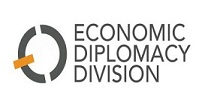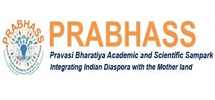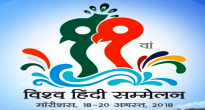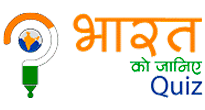The Andean Community is a trade bloc of four countries - Bolivia, Colombia, Ecuador and Peru. Chile, Argentina, Brazil, Paraguay and Uruguay are associate members while Panama, Mexico, and Spain are Observers. The Headquarters of CAN are located in Lima, Peru. Bolivia assumed the Presidency Pro-Tempore of CAN for the period 2014-2015.Won January 11, 2016, Bolivian Jurist Walker San Miguel Rodríguez was elected as Secretary General of CAN.
The regional integration in the Andean countries began with the signing of the Cartagena Agreement (by Bolivia, Chile, Colombia, Ecuador and Peru) in 1969 creating the Andean Pact with the objective of creating a Customs Union and a Common Market.
Venezuela joined the Pact in 1973 but withdrew in 2006 after Colombia and Peru signed Free Trade Agreements with USA. Chile withdrew in 1976 claiming economic incompatibilities. In 1979, the Andean Council of Foreign Ministers, the Andean Court of Justice, and the Andean Parliament were created. In 1985 the Andean Parliament agreed to the establishment of the Simon Bolivar Andean
University located in Sucre, former capital of Bolivia. In 1990, the Andean Presidential Council was created. In 1991, they approved an open skies policy. In 1993, four members (except Peru which was temporarily suspended) established a free trade zone. In 1995, the members adopted a Common External Tariff.
In 1996, the Protocol of Trujillo renamed the Pact as the Andean Community. It also converted the Board of the Cartagena Agreement into a General Secretariat based in Lima, Peru, with not only technical but also political functions giving a new political direction to the integration process. In 2001, the Andean Passport was created, enabling citizens of member states to travel between the countries without visa. In 2005, the integration of Latin American and Caribbean regions gained priority in the agenda of Andean Community. In 2006, the Andean Free Trade Area became fully operational after Peru was fully incorporated.
CAN community deals with the following issues:
• Trade in Goods
• Trade in Services
• Customs Union
• Circulation of Persons
• Common Market
• Common Foreign Policy
• Border Development
• Social Agenda
• Sustainable Development
• Economic Policies
In July 2011 the CAN Presidents reaffirmed their commitment to deepen Andean integration and launched the reengineering of the Andean Integration System (SAI). The Andean Parliament met in Lima on 29th October to discuss and agree on joint measures to solve the problems faced by migrants abroad. The meeting, which includes the participation of 20 Parliamentarians from Bolivia, Colombia, Ecuador, Peru and Chile, also assessed regulations in the functioning of the Parliament of the Union of South American Nations (UNASUR).
Important Institutional bodies within the Andean community:
Besides the Andean Council of Presidents and the Council of Foreign Ministers,
CAN has the following institutions:
| i. |
General Secretariat - This is the executive body, with a full time Secretary General. At present Adalid Contreras Baspineiro (of Bolivia) is the Acting Secretary General. The Secretariat is in Lima, Peru. |
| ii. |
Andean Parliament - is the policy advisory body and is situated in Bogota, Colombia. It consists of 5 Members of Parliament from each member country, directly elected for a period of 5 years.
|
| iii. |
Andean Court of Justice - This body in Quito, Ecuador resolves disputes among member countries.
|
| iv. |
Latin American Development Bank (CAF) – Although CAF is much larger and has 18 Latin American and Caribbean nations as shareholder countries, it is the leading source of external financing for members, contributing more than 40% of their requirements. The annual total credit given by CAF is over US$ 2 billion. The credit is given to regional integration projects and financing of international commerce of companies and banks and government projects. CAF has established its reputation as a successful regional fund with strong fundamentals and good credit rating. In 2014, CAF approved USD 11.7 billion in development projects for the region, raising the figure of approvals over the last five years (2010-2014) to USD 53.7 billion. Exim Bank of India has in the past extended a US$ 10 million line of credit to CAF. CAF is situated in Caracas, Venezuela.
|
| v. |
Latin American Reserve Fund (FLAR) – is a common reserve fund that seeks the stability of member countries by improving their external position and strengthening regional support. Initially called the Andean Reserve Fund, it began operations in 1978. In 1988, accession of other Latin American countries was permitted. Besides the 4 CAN members, FLAR presently also has Costa Rica, Uruguay and Venezuela as its members. It is headquartered in Bogota.
|
|
vi.
|
Simón Bolívar Andean University – With its main campus in Sucre (Bolivia), it also has branches in Quito, La Paz, Caracas and Cali. |
Market :
The Andean Community has a total population of 103 million (2012) with a combined GDP of US$ 1.26 trillion (2014). Although formed in 1969, CAN became operational in the nineties with the establishment of a Free Trade Area in 1993 and Customs Union in February 1995. Internal problems in these countries in the last few years have slowed down the integration process. Today 100% of the goods of Andean origin circulate duty-free within the CAN. During the period January- December 2014, the exports of Andean community to the world were US $ 128 billion – a decrease of 8.91% as compared to the same period last year. During the period January-December 2014, the intra-community exports decreased by 1.35% (from US $ 9.8 billion to US $ 9.7 billion) as compared to the same period last year.
Free flow of people:
Since January 1, 2005, the citizens of the member countries can enter the other Andean Community member states without the requirement of visa. Passengers only need to present their national ID cards.
The Andean passport was created in June 2001. Passports of all 4 member countries are issued based on a standard model which contains harmonized features of nomenclature and security.
CAN and Mercosur
Mercosur
The Andean Community and Mercosur (Argentina, Brazil, Uruguay and Paraguay) comprise the two main trading blocs of South America. In April 1998, they signed a Framework Agreement for the creation of a Free Trade Area between each other and launched negotiations. The first stage of signing by CAN of economic complementarity or tariff preferences agreements with individual Mercosur members were concluded, followed by each CAN member signing a free trade agreement with Mercosur. Subsequently, CAN and Mercosur, along with nations like Chile, have been spearheading deeper integration of all South America through the Union of South American Nations(UNASUR) patterned on the European Union.
CAN and India
In June 2003, India and CAN established a Political Dialogue and Cooperation Mechanism for the purpose of strengthening and diversifying their friendship, understanding and cooperation and developing mutual trade and investment relations and cultural and scientific exchanges. During his official visit to Peru, MOS Dr. Shashi Tharoor met CAN Secretary General Freddy Ehlers, the then Chair Pro Tempore (Peru) of CAN and the Andean Ambassadors accredited to Lima on 21 January 2010. MOS Dr. Tharoor expressed India’s interest in strengthening political and economic relations and cooperation with the Andean Community. The CAN Secretary General wished to cooperate in the fields of environment, energy and food security, rural development and science and technology. The CAN Chair Pro Tempore reiterated the interest of the member countries in holding the First Meeting of the Political Dialogue and Cooperation Mechanism.
























